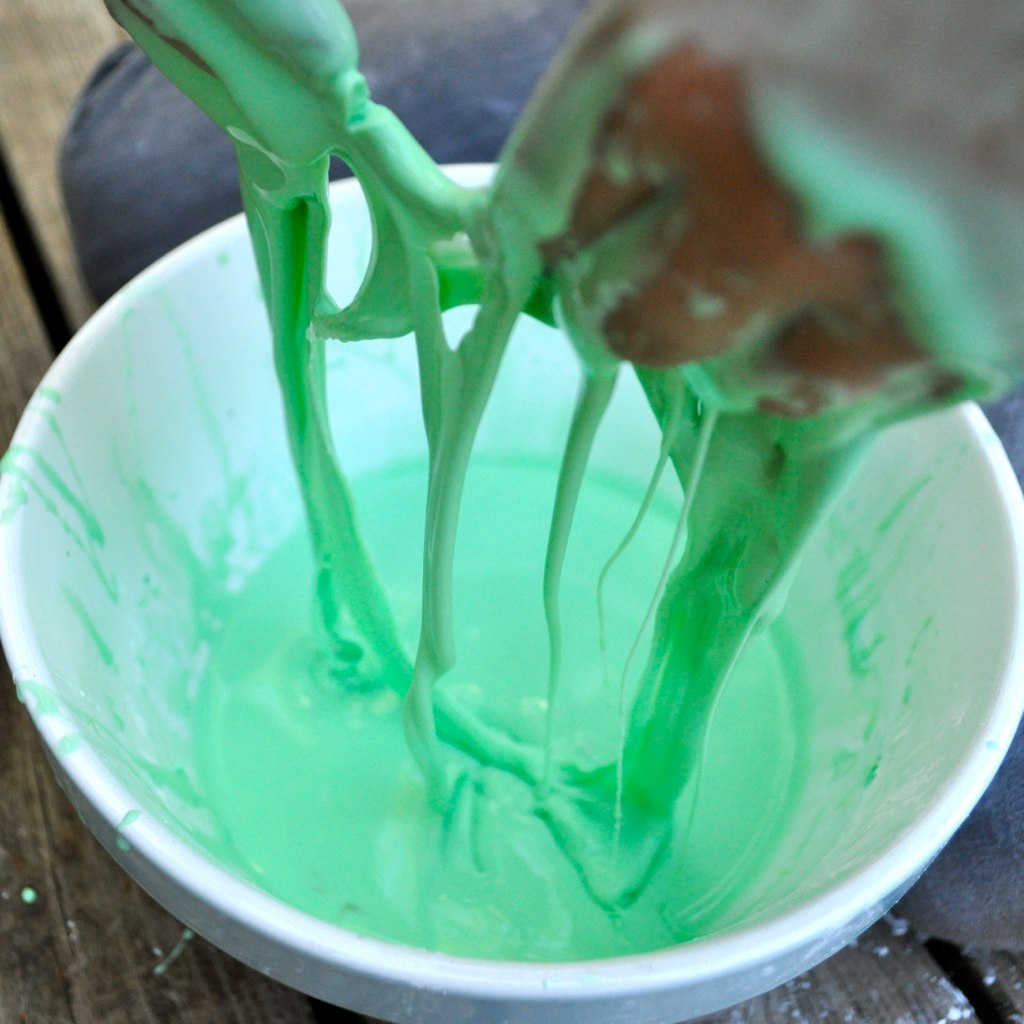
It was a beautiful day on Monday, the big boys’ official last day of summer vacation, and I wanted to do something super special with them before the preschool routine began. We trekked to the zoo in the morning, climbed the apple tree to collect what will be one of our last harvests before the tree goes dormant for the winter, and then decided we needed to try something new and fantastic.
Enter the amazing Newton’s Law-violating world of thixotropy (*** I was later informed that this mixture is actually considered rheopectic or dilatentic rather than thixotropic– check it out for yourself! I know I will be studying up on this phenomenon!***). In simple terms, it is a substance that acts like a liquid when gently moved, but a solid when hard force is applied (such as a hand smacking it or rolling it). This blog post inspired us to do our own experiment, and I’m so glad we did! What fun for everyone (I was just as amazed as the kids)!
Materials Needed:
- 2 cups cornstarch
- 1 cup water
- A few drops food coloring (optional– but be aware that food coloring can stain clothing and skin)


Mix together with a whisk.

Add 1 cup cornstarch, whisk slowly (it will be difficult to stir, but keep mixing until cornstarch is dissolved).


Add 2nd cup of cornstarch and stir with a spoon until mixture is fully incorporated.




Then the fun starts!



We tried hitting it with a spoon (it doesn’t splash, but feels like hitting a solid!), then stirring gently (acts like a liquid!). Then, the best part: digging in with bare hands!










One of the coolest properties of this substance is its extreme sensitivity to body heat and friction. We found that we could make a ball of the substance if we continued working it with our hands, rolling like play dough. But as soon as we stopped exerting force on it, the warmth from our hands immediately melted it! It was the closest thing to an extra-terrestrial experience I think any of us had ever had! There were lots of hoots and hollers going on in our back yard that day.
The boys also experimented with different objects to see how the thixotropic mixture would hold up under, say, the force of a heavy stone:

As we worked with it, the water gradually evaporated from the surface and it became more cornstarch-like:

But this made for easy clean-up off the deck. We just peeled/scraped it up, returned it to the bowl, and added only a couple of tablespoons of water to get it back to the original consistency.
I highly recommend this activity to kids of most ages (maybe 2 1/2 and up?) and parents of all budgets. The total cost was about 75 cents, as we already had the food coloring (and you don’t even need that!) and just bought a $1 box of cornstarch to make sure we had enough (we used about 2/3 of a box). Added bonus? Milo’s hands were “monster green” for a day after. What’s that? You don’t see that as a bonus? I do.
The aftermath?
Totally worth it.

This is super awesome. And who wouldn’t want their hands monster green for a day?
So very cool! I’ll have to tuck this idea away for the future.
We have made this before. So messy and fun! And, good mama for letting those babes wreak havoc. 😉
I’ve heard about stuff like this before but have never seen it in person. It looks like such messy fun and they obviously loved it! How is preschool going to compare with all this summer fun?!
So neat!! I think I know what we’ll be doing tomorrow…
xo
cortnie
This is such a cool project that I’ve had in my mind’s backburner for a while now. Thanks for the reminder! I can’t wait to try it with my crazies.
Completely random, but the natural highlights in their hair are gorgeous. People pay top dollar for that kind of hair.
Oh my gosh, Allison, I know! I wish my hair would naturally highlight like Oliver’s. I was never blond like Milo, so I can’t even compare…
we made it a while back (indoors) and it created quite a mess..but I would love to try it outside sometime soon. such a great idea!
Sorry, but cornstarch slurries are not thixotropic (thins when stressed), but instead are rheopectic and dilatent – the exact opposite of thixotropy. The more you pushed the slurry around, the stiff it became, right? Rheopexy. Dilatency. Not thixotropy.
John – a professional rheologist.
Oh, thank you John! I will correct that mistake!